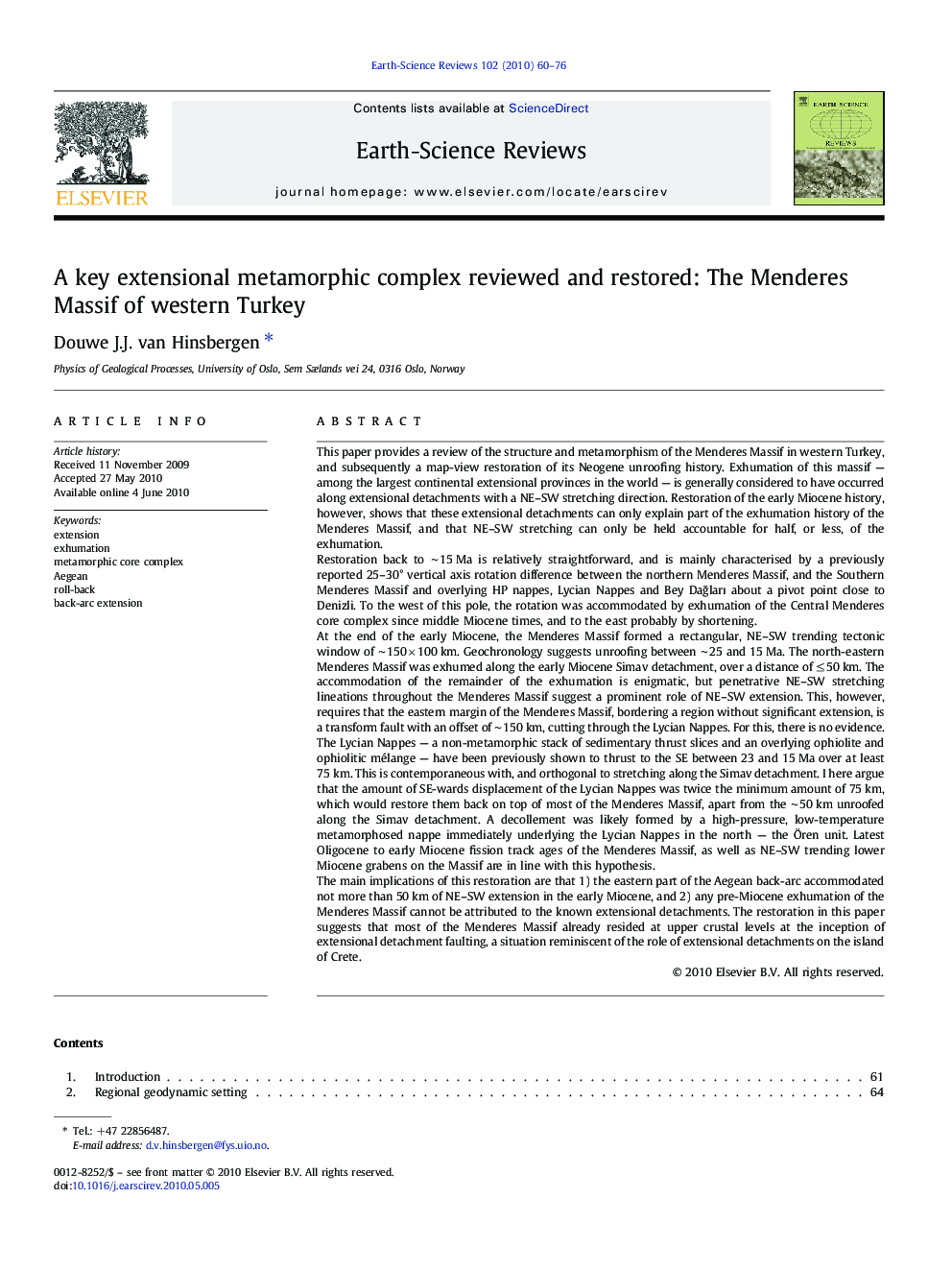| کد مقاله | کد نشریه | سال انتشار | مقاله انگلیسی | نسخه تمام متن |
|---|---|---|---|---|
| 4726093 | 1640011 | 2010 | 17 صفحه PDF | دانلود رایگان |

This paper provides a review of the structure and metamorphism of the Menderes Massif in western Turkey, and subsequently a map-view restoration of its Neogene unroofing history. Exhumation of this massif — among the largest continental extensional provinces in the world — is generally considered to have occurred along extensional detachments with a NE–SW stretching direction. Restoration of the early Miocene history, however, shows that these extensional detachments can only explain part of the exhumation history of the Menderes Massif, and that NE–SW stretching can only be held accountable for half, or less, of the exhumation.Restoration back to ∼ 15 Ma is relatively straightforward, and is mainly characterised by a previously reported 25–30° vertical axis rotation difference between the northern Menderes Massif, and the Southern Menderes Massif and overlying HP nappes, Lycian Nappes and Bey Dağları about a pivot point close to Denizli. To the west of this pole, the rotation was accommodated by exhumation of the Central Menderes core complex since middle Miocene times, and to the east probably by shortening.At the end of the early Miocene, the Menderes Massif formed a rectangular, NE–SW trending tectonic window of ∼ 150 × 100 km. Geochronology suggests unroofing between ∼ 25 and 15 Ma. The north-eastern Menderes Massif was exhumed along the early Miocene Simav detachment, over a distance of ≤ 50 km. The accommodation of the remainder of the exhumation is enigmatic, but penetrative NE–SW stretching lineations throughout the Menderes Massif suggest a prominent role of NE–SW extension. This, however, requires that the eastern margin of the Menderes Massif, bordering a region without significant extension, is a transform fault with an offset of ∼ 150 km, cutting through the Lycian Nappes. For this, there is no evidence.The Lycian Nappes — a non-metamorphic stack of sedimentary thrust slices and an overlying ophiolite and ophiolitic mélange — have been previously shown to thrust to the SE between 23 and 15 Ma over at least 75 km. This is contemporaneous with, and orthogonal to stretching along the Simav detachment. I here argue that the amount of SE-wards displacement of the Lycian Nappes was twice the minimum amount of 75 km, which would restore them back on top of most of the Menderes Massif, apart from the ∼ 50 km unroofed along the Simav detachment. A decollement was likely formed by a high-pressure, low-temperature metamorphosed nappe immediately underlying the Lycian Nappes in the north — the Ören unit. Latest Oligocene to early Miocene fission track ages of the Menderes Massif, as well as NE–SW trending lower Miocene grabens on the Massif are in line with this hypothesis.The main implications of this restoration are that 1) the eastern part of the Aegean back-arc accommodated not more than 50 km of NE–SW extension in the early Miocene, and 2) any pre-Miocene exhumation of the Menderes Massif cannot be attributed to the known extensional detachments. The restoration in this paper suggests that most of the Menderes Massif already resided at upper crustal levels at the inception of extensional detachment faulting, a situation reminiscent of the role of extensional detachments on the island of Crete.
Journal: Earth-Science Reviews - Volume 102, Issues 1–2, September 2010, Pages 60–76